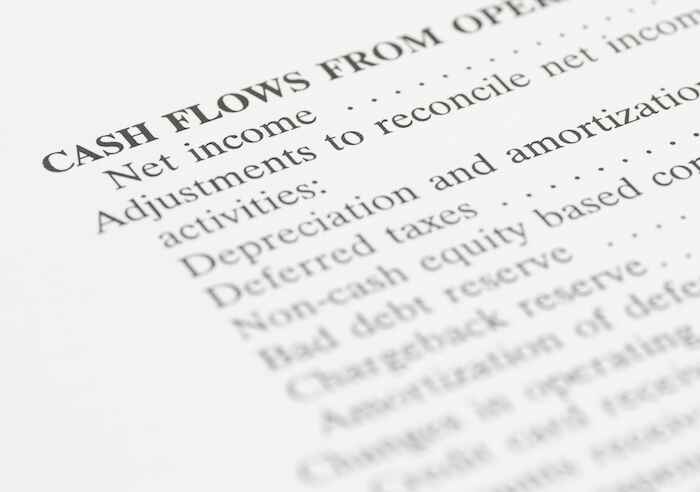A Recipe for Mediocrity? Avoid These Popular Funds
Andy Snyder|September 28, 2020

You know something that would be no fun… retiring broke.
What would be even worse is thinking you’re doing all the right stuff… and still retiring broke.
For a lot of folks, it’s becoming a scary and surprising reality.
They cut their debt. They save their money. And they stick their extra cash into a retirement fund. And yet when they sit down to crunch the numbers, they find out they’ve got way less than they need.
Worse… they’ve got way less than they could have had.
Let us explain. We may be able to help you avoid this Liberty-busting trap.
Big Mistake
We’ve been in the investing game a long time. Hell, we had hair when we got started… but haven’t had to buy a comb since Bush was in office (we won’t say which one).
During that time, we’ve seen lots of trends – but none as powerful as the rise of the exchange-traded fund (ETF). Overall, we’re fans. They’re simple and cheap and get investors in the door.
But there’s a subset of the ETF world we’re not so fond of – target-date funds.
Just like taking our best friend’s mom to prom, we think they sound and look great at first glance. But then we hit the dance floor and soon realize time plays some nasty tricks.
If you haven’t gotten the hint by now, or if you’re a new reader (hey there), we play by our own rules. We believe to our very core that if we do what everybody else does… we get what everybody else gets.
Look around. That’s no good.
It’s the recipe for mediocrity.
But by their very definition, target-date funds offer mediocrity as their best-case outcome.
That’s because they use a flawed investment model.
The Old (Broken) Model
The “diversification” strategy used by most target-date funds is outdated and has never been tested over the long haul. It worked once (during the economic heyday of America, when so many theories were “standardized”)… but times change, and strategies must follow.
Here’s the thing. Most target-date funds are actively managed ETFs that are designed to automatically adjust their risk profiles as retirement nears.
For example, if we were young again and rubbing our fingers through our thick, full head of hair, we’d sit back and dream of retiring in, oh, say, 2050.
Using Vanguard’s version of a 2050 target-date fund as a model, our money would go to about 50% domestic stocks (all sizes), 40% international stocks, 7% domestic bonds and 3% international bonds.
The ratios the fund uses haven’t changed in generations.
In other words, if we invested this morning, a decade ago or a decade from now, a target-date fund with a “maturity” date that’s 30 years out will almost certainly use that generic allocation – no matter how the world’s economy has evolved.
Again… it made sense 30 years ago – before bonds launched into an unstoppable bull market, before interest rates hit zero and before the “Yellen put” became a thing.
But what if we want to retire in five years?
That’s trouble.
All of a sudden, 40% of our portfolio is allocated to bonds.
In other words, if we had gotten in this fund when it was allocated heavily to stocks (30 years ago), we would have just spent the last decade or so selling cheap stocks and buying expensive bonds.
One fund we studied had 7% of its holdings allocated to cash… and returned just 4% last year. Overall, it’s up 133% since the 2009 lows. The S&P 500, on the other hand, is up 300%.
Talk about a nasty surprise come retirement.
Markets Evolve
Please understand this. The markets are fluid. They are always changing based on demographics of investors, interest rates, monetary policy, inflation and even political pressure.
To think we should be investing using the same strategies whether the risk-free rate (the 10-year Treasury) is 2% or 8% is flat-out ludicrous.
And yet many, many folks are.
We’re not alone in our opinion.
Just recently, the folks at Bank of America declared the traditional portfolio diversification model dead.
“The relationship between asset classes has changed so much,” its portfolio strategists wrote, “that many investors now buy equities not for future growth but for current income, and buy bonds to participate in price rallies.”
Hmmm… that’s not in the textbooks. And it certainly isn’t represented in target-date funds.
By our ciphering, it’ll be another 30 years until the change is accurately reflected in the models.
We reckon that’ll be too late for you.
Us too.
The solution, though, is why we get up in the mornings. It’s why we tap on this keyboard and write you with all sorts of facts, ideas and intellectual oddities. They may seem random to the fella who doesn’t want to think. But for the person who wants to pull his foot out of the trap of mediocrity, it all makes sense.
By asking questions and not accepting the conventional wisdom, we’re better, smarter… and, most certainly, richer.
When it comes to this topic, our purpose is clear.
Target-date funds sound like a good idea. But by digging deeper, we see the fallacy.
That’s big… especially if you’re not so fond of retiring to the poorhouse.
What other “textbook” investing advice have you received? Tell us about it at mailbag@manwardpress.com.





